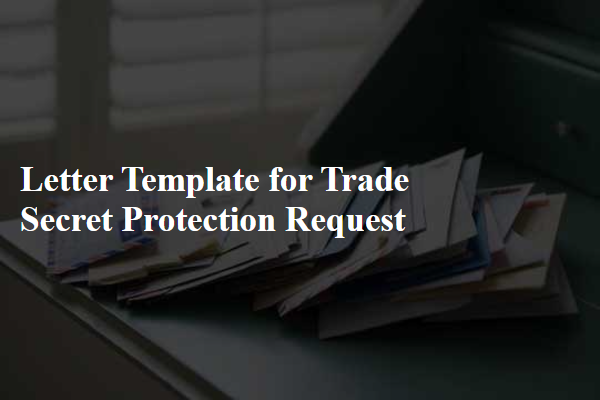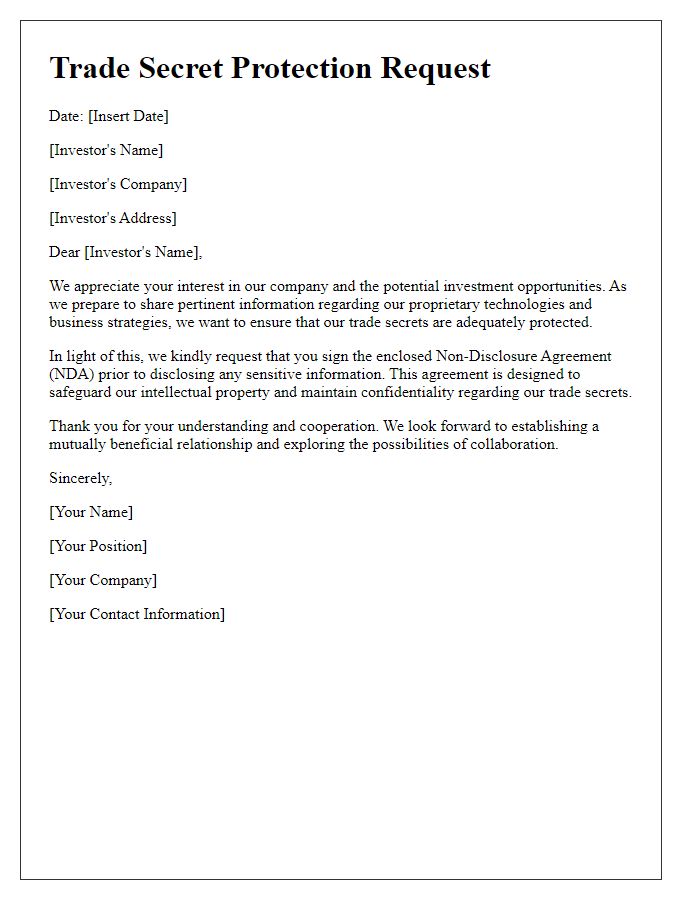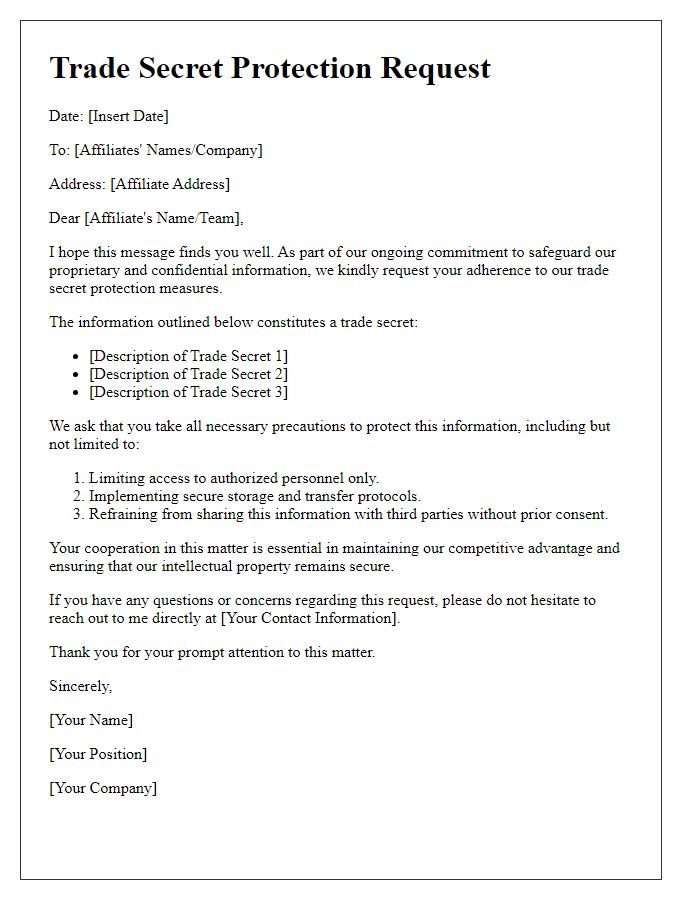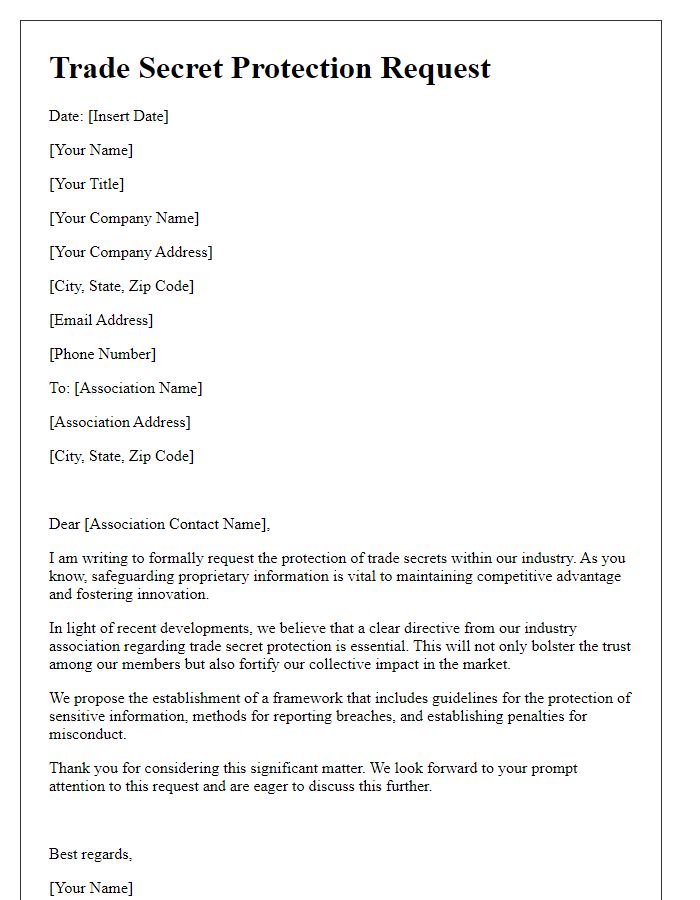Have you ever wondered how businesses safeguard their most valuable information, like trade secrets? Protecting these secrets is crucial for maintaining a competitive edge and ensuring longevity in the marketplace. In this article, we'll explore the essential steps and considerations for drafting a trade secret protection request that meets legal standards and safeguards your intellectual property. So, if you're looking to secure your business's confidential information, keep reading to learn more!

Clear Identification of Trade Secret
Trade secrets, such as proprietary formulas or processes, must be clearly defined to protect intellectual property. For instance, the recipe for Coca-Cola, a closely guarded formula, includes a unique blend of flavoring agents that is not disclosed publicly. Identification involves outlining specific aspects like manufacturing methods, marketing strategies, or customer lists that provide economic value due to their secrecy. Establishing that the information is subject to reasonable efforts to maintain its confidentiality, including limited access controls and confidentiality agreements, further solidifies trade secret claims. The protection of these secrets is crucial for maintaining a competitive edge in specific industries like technology and pharmaceuticals, where innovation drives market success.
Confidentiality Obligations and Acknowledgment
Confidentiality obligations ensure the protection of sensitive information within business environments, emphasizing the significance of safeguarding trade secrets. Employees often sign Non-Disclosure Agreements (NDAs) that legally bind them to maintain confidentiality regarding proprietary details such as formulas, processes, or customer lists. The heightened importance of these obligations was underscored by the 2016 Defend Trade Secrets Act, which allows companies to seek federal protection against espionage or misappropriation of trade secrets. Organizations must implement stringent measures to inform employees about the importance of confidentiality, including training sessions and access restrictions. Regular audits of compliance with these obligations help mitigate risks and ensure the integrity of confidential information.
Purpose and Scope of Disclosure
A trade secret protection request often involves the careful delineation of both the purpose and the scope of disclosure for sensitive information. The purpose generally revolves around safeguarding proprietary knowledge, including formulas, practices, processes, designs, instruments, patterns, or compilations of information, which provide a competitive advantage to a business, often designated as confidential under corporate law. The scope of disclosure may encompass specific technical details, strategic plans, and customer lists that are essential to the company's operation, innovation efforts, and market strategy. Ensuring minimal access to only those individuals who have a legitimate need to know, typically through non-disclosure agreements (NDAs), fortifies the confidentiality of the information. This structured approach not only mitigates the risk of unauthorized sharing but also reinforces the legal standing of the trade secret under the Uniform Trade Secrets Act, effective across many U.S. states, and the Economic Espionage Act, which encompasses penalties for misappropriation of trade secrets.
Legal Jurisdictions and Regulations
A comprehensive trade secret protection request must address specific legal jurisdictions and regulations relevant to the protection of confidential information. In the United States, the Uniform Trade Secrets Act (UTSA) serves as a foundation, offering guidelines for the definition and enforcement of trade secrets across states. Additionally, the Defend Trade Secrets Act of 2016 (DTSA) allows federal jurisdiction for cases involving trade secret misappropriation. Key elements to include in the request are the identification of the trade secret--such as proprietary formulas, customer databases, or manufacturing processes--and the rationale for its protection, particularly in the context of competitive advantage in industries like pharmaceuticals or technology. Regional regulations, such as the California Uniform Trade Secrets Act, may impose specific requirements for the notice to all stakeholders about the confidentiality status of shared information. Proper documentation showing the measures taken to maintain secrecy--such as non-disclosure agreements (NDAs) and restricted access protocols--will strengthen the request. Compliance with international regulations, such as the European Union's General Data Protection Regulation (GDPR), may also be necessary if the trade secret involves data related to EU citizens.
Consequences of Unauthorized Disclosure
Unauthorized disclosure of trade secrets can lead to severe repercussions for businesses, including significant financial losses estimated at millions of dollars annually. These secrets, often involving proprietary formulas, methods, or processes specific to industries such as pharmaceuticals or technology, can be exploited by competitors if leaked. Legal consequences may arise under the Uniform Trade Secrets Act (UTSA), with potential lawsuits resulting in additional penalties and damage awards. Moreover, loss of competitive advantage can occur, jeopardizing market position and customer trust, especially in sectors like manufacturing or finance. Protecting these assets through non-disclosure agreements (NDAs) and immediate reporting of breaches is crucial to mitigate risks associated with information leaks.
















Comments